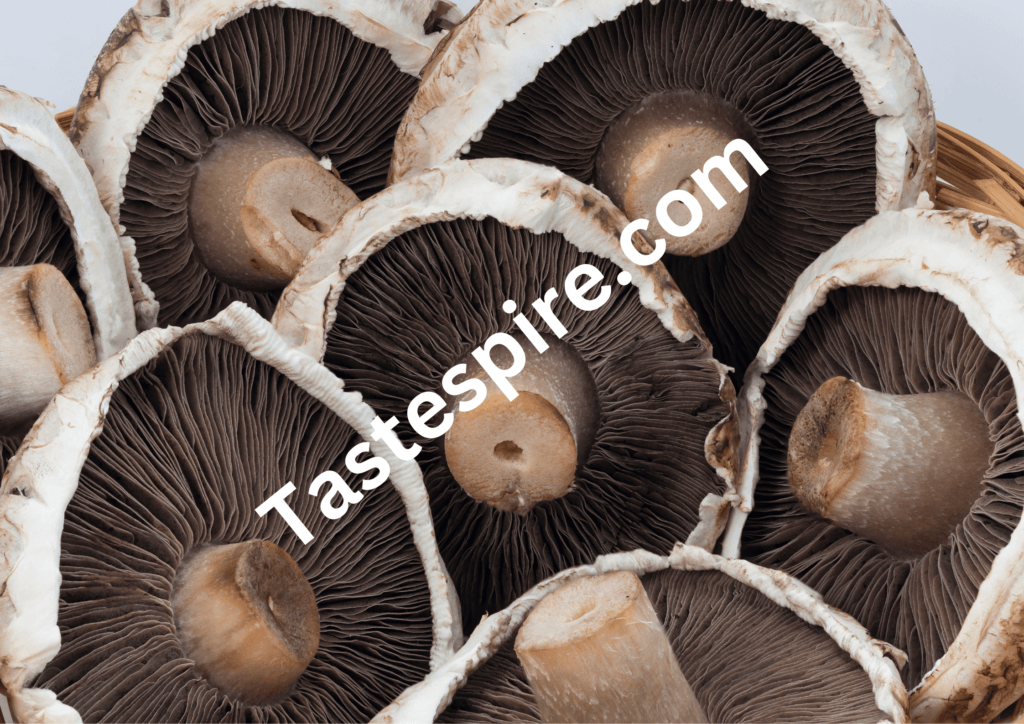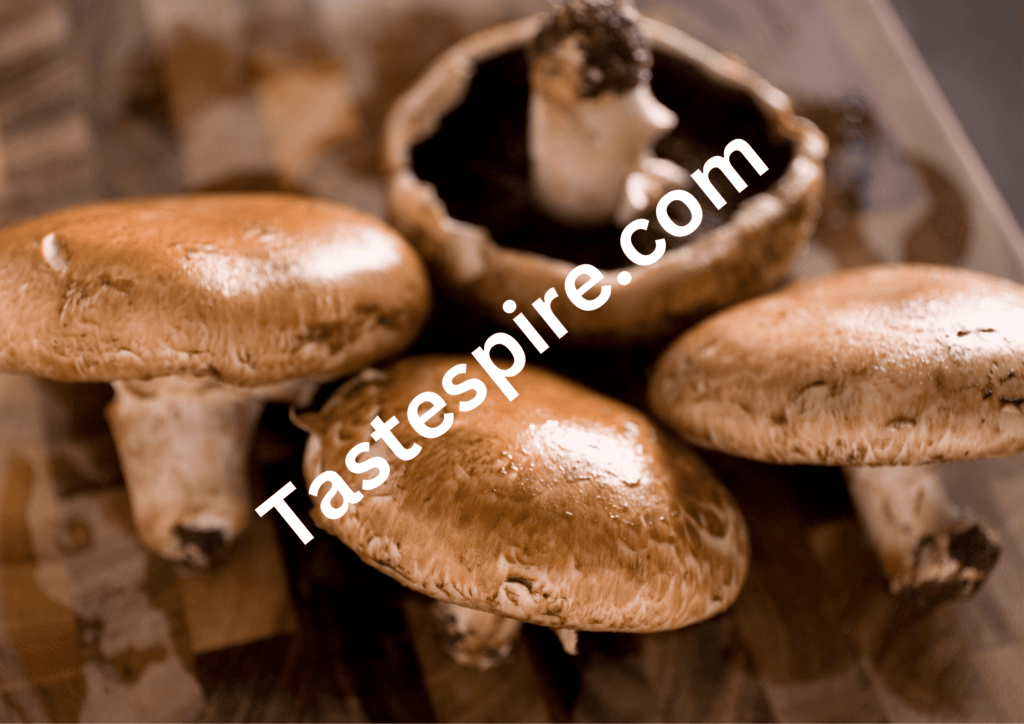Portobello mushrooms are well-known and widely enjoyed edible mushrooms. They are a favorite in kitchens around the world due to their rich flavor and versatility in cooking. Many people love to savor their earthy taste in various dishes. However it’s important to shed light on the potential negative effects of these mushrooms to ensure safe consumption.
These mushrooms often hailed for their meaty texture and deliciousness are a common sight in salads, stir-fries and even on pizzas. People turn to Portobello mushrooms as a delightful ingredient adding depth and flavor to their meals.
In this article we will delve into the negative effects of Portobello mushrooms. While they are generally considered safe for consumption it’s crucial to be aware of certain aspects. We’ll explore the possibility of allergies, digestive issues and even concerns about their impact on health. By understanding these potential drawbacks you can continue to enjoy Portobello mushrooms in a safe and informed manner.
So as we journey through the world of Portobello mushrooms we’ll uncover the not-so-sunny side to ensure that you can savor their rich taste without worry.
Table of Contents
Understanding Portobello Mushrooms

What is Portobello Mushrooms?
Portobello mushrooms scientifically known as Agaricus bisporus are a type of edible mushroom cherished for their delightful taste and unique culinary qualities. These mushrooms sometimes called portabella, portabello, cremini or even baby bella belong to the same species as the more common white button mushrooms. However they stand apart due to their mature stage which grants them distinct characteristics highly valued in the world of cooking.
Origins and Various Names of Portobello Mushrooms
Portobello mushrooms have their roots in the grasslands of Eurasia and North America. These mushrooms have earned an array of names across different regions and cuisines. You might encounter them as cremini or crimini mushrooms when they are in their younger stage. When fully matured they proudly go by the name “Portobello.”
Distinct Characteristics and Popularity in Cuisine
What makes Portobello mushrooms truly special are their size and texture. These mushrooms are the larger more mature version of the brown mushrooms you might find on your supermarket shelves. Their caps are broad and flat offering a hearty meaty texture that sets them apart. It’s this unique quality that makes them a beloved ingredient in various dishes.
Rich Taste and Versatility in Cooking
Portobello mushrooms are celebrated for their rich earthy flavor often described as “umami” which adds depth and complexity to dishes. Their versatility in cooking is another reason for their popularity. These mushrooms can be grilled, sautéed, roasted, stuffed or even used as pizza toppings. Whether they’re a main course or a flavorful addition to a recipe Portobello mushrooms are cherished for their ability to elevate the taste of any dish.
Negative Effects of Portobello Mushrooms
Potential Negative Effects
While Portobello mushrooms are widely enjoyed and considered safe for consumption it’s essential to be aware of potential risks associated with them. Here are some important negative effects to keep in mind:
- Allergic Reactions: Some individuals may experience allergic reactions to Portobello mushrooms. These reactions can vary from mild symptoms like itching or hives to more severe responses including difficulty breathing.
- Digestive Issues: Portobello mushrooms contain substances known as FODMAPs which can lead to digestive problems especially in individuals with sensitive digestive systems or irritable bowel syndrome (IBS). These issues may manifest as bloating, gas, abdominal pain or diarrhea.
- Controversy over Carcinogenic Properties: There have been discussions and controversies regarding the possibility of Portobello mushrooms having carcinogenic properties. While this topic remains debated and requires further research it underscores the need for caution and awareness when adding Portobello mushrooms to your meals.
- Presence of Toxins: Portobello mushrooms like other mushroom varieties can contain toxins such as hydrazine and agaritine. These compounds have been associated with negative side effects like nausea and difficulty breathing. However it’s crucial to note that most studies on these compounds have been conducted on animals or in laboratory settings and their effects on humans are not fully understood.
- Gout and Kidney Stone Concerns: Portobello mushrooms are rich in purines which can be broken down into uric acid in the body. High levels of uric acid may lead to kidney stones or gout a painful form of arthritis. Individuals with a history of gout or kidney stones should consider limiting their consumption of purine-rich foods including Portobello mushrooms.
It’s important to approach the consumption of Portobello mushrooms with awareness and moderation especially if you have any underlying health conditions or concerns related to allergies, digestion or dietary restrictions. Consulting with a healthcare professional can provide personalized guidance for incorporating Portobello mushrooms into your diet safely.
Allergies and Reactions to Portobello Mushrooms
Portobello mushrooms like other foods can trigger allergic reactions in some individuals. It’s crucial to be aware of these potential reactions and take necessary precautions. Here are some common allergic reactions associated with Portobello mushrooms:
- Skin Rashes: One of the common allergic reactions to Portobello mushrooms is the development of skin rashes including itchy and uncomfortable hives.
- Gastrointestinal Disturbances: Consuming Portobello mushrooms can sometimes lead to gastrointestinal disturbances such as diarrhea. These issues may result from either an allergy or contamination of the mushrooms.
To minimize the risk of allergic reactions and ensure safe consumption:
- Proper Cleaning: Always clean Portobello mushrooms thoroughly before cooking. Cleaning helps remove dirt and potential contaminants from the surface.
- Cooking: Ensure that Portobello mushrooms are cooked properly before consumption. Cooking helps break down any harmful compounds and reduces the risk of allergic reactions or digestive issues.
Being cautious about allergies and following good food safety practices can help you enjoy Portobello mushrooms without adverse effects. If you’re trying Portobello mushrooms for the first time consider starting with a small portion to assess any potential reactions.
Health Risks Associated with Portobello Mushrooms
While Portobello mushrooms are generally safe to consume there are some health risks to be aware of. Here are key points to consider:
- Contamination: Portobello mushrooms like other varieties can be contaminated with heavy metals and harmful bacteria if grown in polluted environments. It’s essential to source mushrooms from reputable suppliers to reduce the risk of contamination.
- Carcinogenic Potential: There’s a debate about the potential carcinogenicity of Portobello mushrooms. Some studies suggest that certain compounds found in these mushrooms such as agaritine may be carcinogenic in high doses. However the levels of these compounds in mushrooms consumed by humans are generally low.
- Moderation: To minimize potential health risks it’s advisable to consume Portobello mushrooms in moderation. Avoid excessive intake especially if you have specific health concerns.
- Dietary Diversity: Incorporating a variety of vegetables and mushroom types into your diet can help mitigate potential risks associated with Portobello mushrooms. A balanced and diverse diet is key to overall health.
By being aware of these potential health risks and practicing moderation in your dietary choices you can enjoy the benefits of Portobello mushrooms while minimizing any adverse effects.
Safety Measures and Recommendations
To safely enjoy Portobello mushrooms consider the following measures and recommendations:
- Source from Reputable Suppliers: When purchasing Portobello mushrooms choose trusted suppliers. This minimizes the risk of consuming mushrooms grown in contaminated environments.
- Thorough Cooking: Always ensure that Portobello mushrooms are cooked thoroughly. Proper cooking helps eliminate potential toxins and reduces the risk of adverse effects. Use a medium to high heat setting for cooking.
- Consult a Healthcare Professional: If you have concerns about consuming Portobello mushrooms or experience any adverse symptoms after consumption don’t hesitate to consult a healthcare professional. They can provide personalized advice and address any health-related queries.
- Dietary Diversity: Incorporate a wide range of vegetables and mushroom varieties into your diet. This not only reduces potential health risks associated with Portobello mushrooms but also promotes overall dietary balance and well-being.
By following these safety measures and recommendations you can enjoy the benefits of Portobello mushrooms while minimizing potential health concerns.

FAQs
Q: What are the negative side effects of portabella mushrooms?
Portobello mushrooms while generally safe can have some negative side effects. These may include allergic reactions, digestive issues like bloating and gas, potential carcinogenic properties and the presence of toxins like hydrazine and agaritine. Some individuals may also experience gout or kidney stone concerns due to purines.
Q: What are the health effects of portobello mushrooms?
Health Effects of Portobello Mushrooms
- Breast Cancer Prevention: Portobello mushrooms may help reduce estrogen levels potentially lowering the risk of breast cancer. Regular consumption especially when combined with green tea can further decrease the risk.
- Diabetes Control: These mushrooms are rich in vitamins A, D, and B complex along with dietary fiber which can help regulate blood glucose and cholesterol levels making them beneficial for diabetes management.
- Heart Health: Portobello mushrooms contain lovastatin which lowers cholesterol levels and can help prevent heart-related diseases. They also contribute to managing type 2 diabetes.
- Antioxidant Properties: Portobello mushrooms exhibit strong antioxidant properties protecting cells from oxidative damage and potentially reducing the risk of various cancers.
- Rich Protein Source: With 34 to 44% protein content these mushrooms are an excellent meat substitute. They offer essential nutrients alongside protein such as carbohydrates, fats, sugars and vitamins.
- Improved Memory: Portobello mushrooms are rich in dietary vitamin D which supports the central nervous system contributing to memory and overall brain health.
- Immune System Boost: Studies have shown that Portobello mushrooms enhance the immune system and possess antitumor properties. They promote dendritic cell maturation an essential element of the immune response.
- Blood Pressure Stabilization: High potassium and low sodium content in Portobello mushrooms help regulate blood flow and maintain normal blood pressure reducing the risk of heart-related diseases and hypertension.
- Digestive Health: Rich in dietary fiber Portobello mushrooms aid in bowel regularity and help prevent constipation promoting smooth bowel movements.
- Antibacterial and Antifungal Properties: Portobello mushrooms exhibit antibacterial effects against various gram-positive and gram-negative bacteria. They also control candida species offering a wide range of antibacterial and antifungal benefits.
Q: What happens if you eat too much portobello mushrooms?
Consuming Portobello mushrooms in moderation is recommended. Excessive consumption may lead to digestive discomfort due to their high fiber content. Additionally some studies have raised concerns about potential carcinogenic properties in high doses so it’s essential to include a variety of foods in your diet.
Q: Is it OK to eat portobello mushrooms?
Yes, it’s generally safe to eat Portobello mushrooms when they are cooked properly and sourced from reputable suppliers. However individuals with known allergies to mushrooms should exercise caution. If you have specific health concerns or experience adverse reactions it’s advisable to consult a healthcare professional for personalized guidance.
Conclusion
In conclusion while Portobello mushrooms are beloved for their rich taste and versatility in cooking it’s crucial to be aware of their potential negative effects. Understanding these risks is key to safely enjoying this popular edible variety.
We’ve explored how some individuals may experience allergic reactions, skin rashes or gastrointestinal disturbances when consuming Portobello mushrooms. The presence of substances like FODMAPs, high fiber content and certain compounds can lead to digestive discomfort. There’s also ongoing debate about their possible carcinogenic properties and concerns related to toxins like hydrazine and agaritine. For those with a history of gout or kidney stones the purines in these mushrooms might be a concern.
To ensure your safety it’s essential to clean and cook Portobello mushrooms thoroughly. Consider sourcing them from reputable suppliers and consult healthcare professionals if you have concerns or experience adverse symptoms. Remember moderation and a varied diet are key to enjoying the benefits of Portobello mushrooms while minimizing potential risks. So go ahead savor their flavor and relish the nutrients they offer but do so wisely and in moderation.
